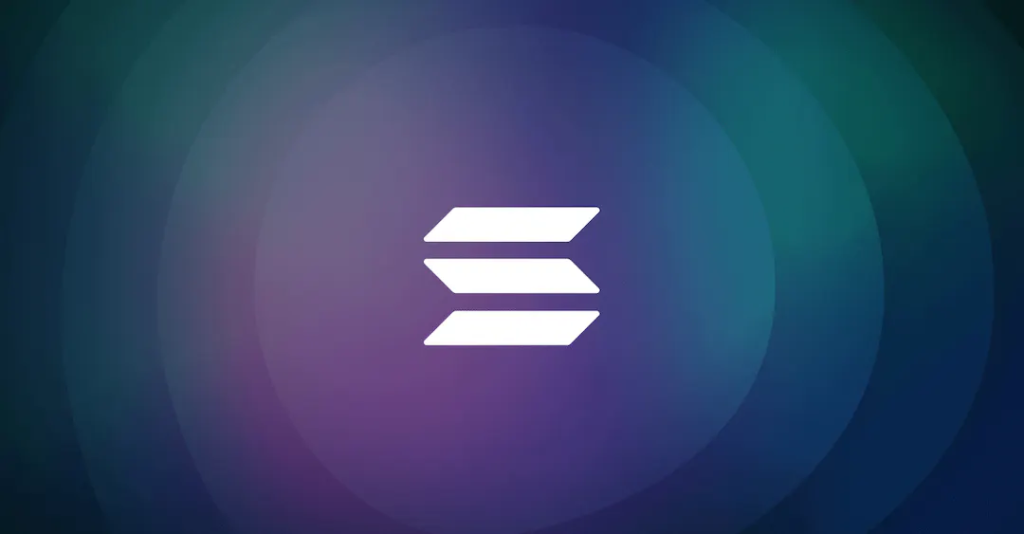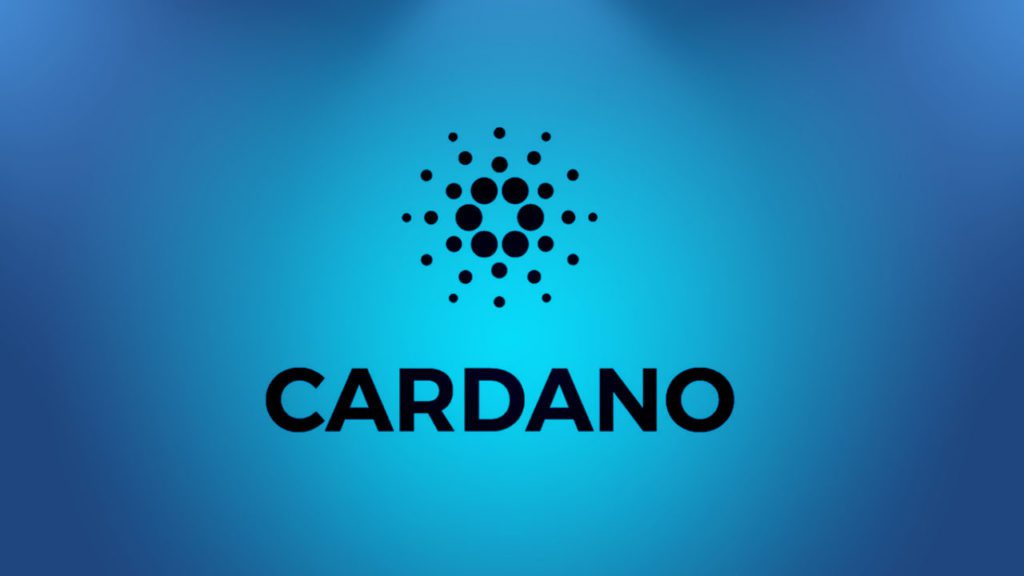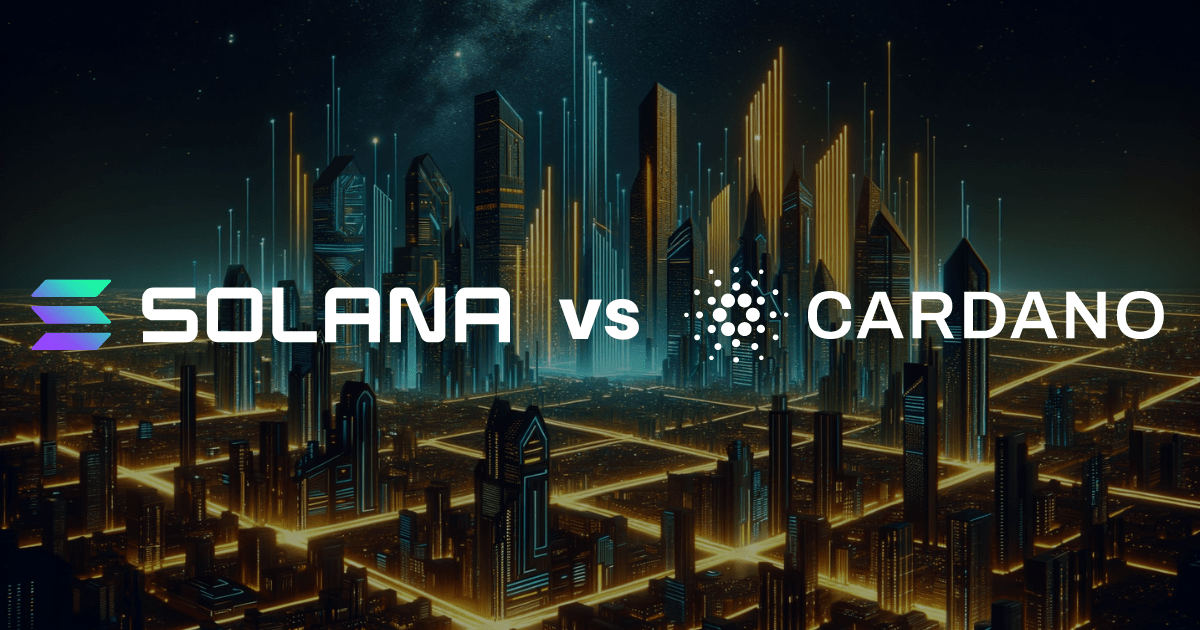Table of Contents
- Solana Overview
- Key Features of Solana
- Cardano Overview
- Key Features of Cardano
- Technology and Architecture
- Smart Contracts and Development
- Performance and Transactions
- Governance and Sustainability
- Ecosystem and Partnerships
- Adoption and Use Cases
- Challenges and Concerns
- Solana vs Cardano – What’s The Verdict?
- FAQ
In the ever-evolving world of cryptocurrencies and blockchain technology, Solana and Cardano have emerged as two prominent players. Both ecosystems offer unique features and promise to revolutionize various industries. In this comprehensive comparison, we will delve deep into the Solana vs Cardano debate to help you understand their strengths, weaknesses, and potential use cases.
Solana Overview

Solana, often referred to as a high-performance blockchain, was founded in 2020 by Anatoly Yakovenko. It gained rapid popularity due to its focus on scalability and lightning-fast transaction speeds. Solana’s architecture leverages innovative technologies, and a unique consensus mechanism called Proof-of-History (PoH).
Key Features of Solana
- Scalability: Solana is designed to handle thousands of transactions per second (TPS), making it a preferred choice for applications with high throughput requirements.
- Speed: Thanks to its PoH mechanism, Solana boasts one of the fastest transaction confirmation times in the blockchain space.
- Low Transaction Costs: Users appreciate Solana’s cost-effective transactions, especially when compared to other blockchains like Ethereum.
- DeFi Dominance: Solana has become a hub for decentralized finance (DeFi) projects, with a growing ecosystem of DeFi applications and platforms.
Cardano Overview

Cardano, created by Charles Hoskinson, co-founder of Ethereum, is often hailed for its academic rigor and emphasis on sustainability. Launched in 2017, Cardano aims to provide a secure and scalable platform for the development of smart contracts and decentralized applications (DApps).
Key Features of Cardano
- Proof-of-Stake (PoS) Consensus: Cardano relies on a PoS mechanism, which is considered energy-efficient and environmentally friendly compared to Proof-of-Work (PoW) systems.
- Formal Verification: Cardano’s development process involves formal verification, ensuring a high degree of security and reducing the risk of vulnerabilities.
- Sustainability: The project’s treasury system and governance model promote long-term sustainability and funding for ecosystem growth.
- Interoperability: Cardano aims to achieve interoperability with other blockchains, allowing seamless communication between different networks.
Technology and Architecture
Solana’s unique architecture combines Proof-of-History (PoH), a PoS mechanism, and a novel consensus algorithm known as Tower BFT. This blend enables Solana to achieve exceptional speed and scalability. PoH acts as a historical record of events, reducing the need for nodes to reach consensus on the order of transactions.
Cardano utilizes the Ouroboros PoS protocol for consensus, which divides time into epochs and slots, providing a secure and efficient way to confirm transactions. Additionally, Cardano’s smart contract platform, Plutus, is built on the functional programming language Haskell, known for its mathematical rigor.
Smart Contracts and Development
Solana’s smart contract platform, known as Solana Contracts, allows developers to create and deploy decentralized applications. It supports programming languages like Rust and C, making it accessible to a wide range of developers.
Cardano’s smart contract development is facilitated by Plutus, which employs the Haskell-based language Marlowe for financial contracts and the Cardano Computation Layer (CCL) for general-purpose contracts. This approach ensures robust and secure smart contract execution.
Performance and Transactions
Solana is renowned for its exceptional performance, boasting a throughput of over 65,000 TPS. Transactions on Solana are processed at lightning speed, with confirmation times of just a few seconds. Furthermore, Solana’s low transaction costs make it an attractive option for users and developers alike.
Cardano, while secure and efficient, currently supports a lower TPS compared to Solana. However, it focuses on sustainability and energy efficiency. As the platform evolves and upgrades are implemented, transaction speeds are expected to improve.
Governance and Sustainability
Solana’s governance relies on a decentralized autonomous organization (DAO) structure, where token holders have a say in protocol upgrades and decisions. The ecosystem’s adaptability and rapid growth showcase the effectiveness of this model.
Cardano’s treasury system allocates funds for development, ensuring long-term sustainability. Additionally, the platform is governed through a decentralized voting mechanism, allowing the community to participate in decision-making processes.
Ecosystem and Partnerships
Solana has witnessed exponential growth in its ecosystem, with numerous DeFi projects, NFT marketplaces, and gaming platforms choosing to build on the platform. High-profile partnerships with leading crypto projects have further solidified Solana’s position in the industry.
Cardano’s ecosystem is steadily growing, with notable partnerships and projects in the pipeline. The platform’s commitment to research and development ensures a promising future.
Adoption and Use Cases
Solana’s speed and scalability make it suitable for a wide range of applications, including decentralized exchanges (DEXs), non-fungible tokens (NFTs), gaming, and DeFi platforms. Its low transaction costs also benefit users and developers.
Cardano’s focus on security and sustainability makes it a preferred choice for projects that prioritize these aspects. It is well-suited for applications in healthcare, finance, supply chain management, and more.
Challenges and Concerns
Solana has faced criticism for centralization concerns and occasional network congestion. The platform’s rapid growth has led to challenges in maintaining decentralization.
Cardano’s slower development pace has led to criticism, as some believe it needs to catch up with competitors in terms of smart contract capabilities and DeFi offerings.
Solana vs Cardano – What’s The Verdict?
In the Solana vs Cardano showdown, both blockchains have carved out their niches in the crypto space. Solana excels in speed, scalability, and DeFi dominance, while Cardano boasts a robust academic foundation and sustainability. The choice between them ultimately depends on your specific requirements and priorities.
As the blockchain industry continues to evolve, Solana and Cardano remain exciting projects to watch. Each has its strengths and challenges, and their success will be determined by their ability to adapt and innovate in a rapidly changing landscape.
Whether you choose Solana, Cardano, or a combination of both, the future of blockchain technology is sure to be shaped by these groundbreaking platforms.
FAQ
What are the primary differences between Solana and Cardano?
Solana is known for its high throughput and fast transaction speeds, primarily due to its unique Proof of History (PoH) consensus mechanism. Cardano, on the other hand, uses a Proof of Stake (PoS) protocol named Ouroboros, focusing on sustainability and peer-reviewed academic research to ensure a highly secure and scalable blockchain.
Which is more scalable, Solana or Cardano?
Solana is generally considered more scalable due to its higher transaction speed and capacity, supported by its PoH and PoS hybrid mechanism. Cardano is also scalable but focuses more on security and sustainability, which can sometimes limit its transaction speed.
How do the transaction fees compare between Solana and Cardano?
Solana typically offers lower transaction fees compared to Cardano. This is partly due to Solana’s high throughput, which efficiently handles a larger number of transactions at a lower cost.
Which blockchain is more environmentally friendly?
Both Solana and Cardano are more environmentally friendly compared to proof-of-work (PoW) blockchains like Bitcoin. However, Cardano often emphasizes its eco-friendly approach and sustainability as core principles.
How do smart contracts differ between Solana and Cardano?
Solana supports smart contracts with its high-speed and low-cost infrastructure, making it favorable for developers looking for efficiency. Cardano took a more methodical approach, carefully rolling out its smart contract capabilities to ensure security and scalability, though this can sometimes mean more complexity in development.
Which has a larger ecosystem, Solana or Cardano?
Both ecosystems are rapidly growing. Solana has quickly built a substantial ecosystem, especially in DeFi and NFTs, due to its high transaction speeds. Cardano’s ecosystem has been growing steadily, especially after the Alonzo upgrade that enabled smart contracts.
Are Solana and Cardano secure?
Both blockchains prioritize security, but their approaches differ. Cardano’s emphasis on academic peer review and formal verification methods offers a high degree of security assurance. Solana also focuses on security but has faced some challenges due to its rapid scaling and network congestion issues.
What types of projects are best suited for Solana?
Projects that require high throughput and speed, such as DeFi applications and NFT marketplaces, may prefer Solana
What types of projects are best suited for Cardano?
Cardano is well-suited for projects that prioritize security and sustainability, such as supply chain solutions or identity verification systems.
Which has a better performance track record, Solana or Cardano?
Performance can be subjective and depends on the criteria. Solana has shown remarkable performance in terms of transaction speed and throughput but has faced some network stability issues. Cardano has been more conservative in its rollout, focusing on stability and incremental upgrades, which has sometimes slowed its development progress.

